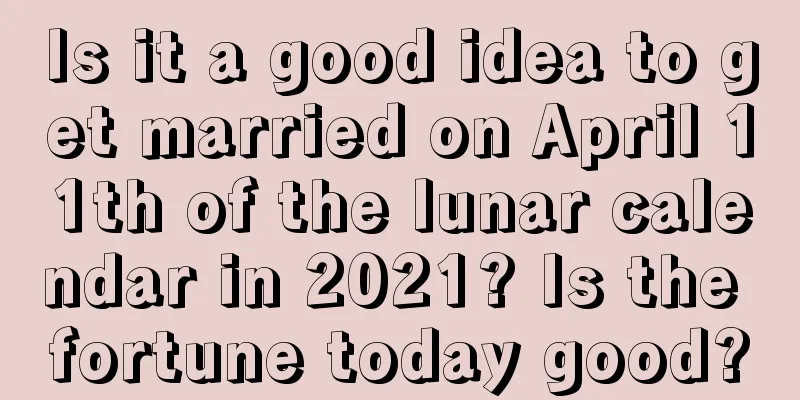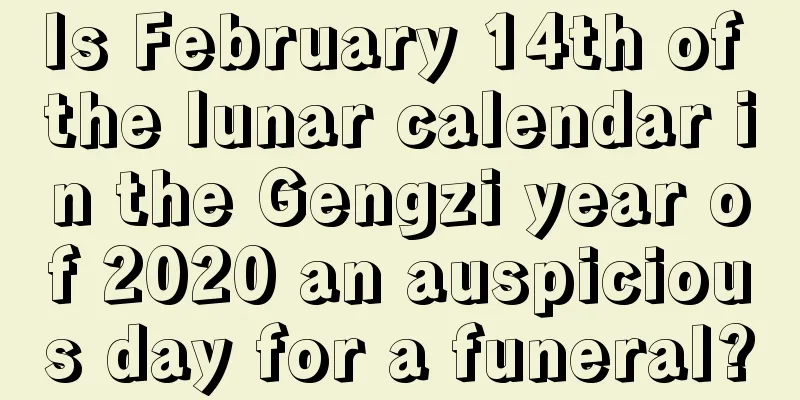Detailed explanation on how to use the twenty-five-layer compass!

Introduction: Compass is an important tool for Feng Shui operations, and its basic function is orientation. The tool we often see in the hands of Feng Shui masters is the compass. We often say that the compass is the Feng Shui master's "rice bowl". So how is the twenty-five-story compass used? Let me explain it to you below! In order to facilitate everyone's reading and reference, Mr. Shui Mo has carefully sorted out many articles and topics related to the compass. Friends who want to know more can take a look.How to use the twenty-five-layer compassLayer 1: Tianchi Ancient traditional compasses are divided into water compasses and land compasses. The water compass is composed of a magnetic needle placed in the belly of a fish-shaped piece of wood. The wood floats on a plate of water and naturally rotates to point to the south. This plate of water is the so-called "Tianchi". Feng Shui theory believes that the compass determines the north and south meridians, gold and water are hidden in the Tianchi, movement is yang, stillness is yin, and the wide pattern, "two poles determine, four images divide, eight trigrams determine", can collect the essence of heaven and earth, measure the degrees of the stars above, and observe the flow of mountains and rivers below. (Hu Guozhen, "Interpretation of the Compass")The second layer: The innate eight trigrams. This layer has only eight trigrams. According to the different order of the hexagrams. There is a distinction between "innate" and "acquired". Legend has it that "Xiantian" was created by Fuxi, and "Houtian" was created by King Wen of Zhou. The Eight Trigrams are used to represent the positions of the eight directions. Each direction is forty-five degrees apart. The directions of the Eight Trigrams are: Qian in the south, Kun in the north, Li in the east, Kan in the west, Zhen in the northeast, Dui in the southeast, Xun in the southwest, and Gen in the northwest. The third layer: The directions of the later celestial bagua are: Li in the south, Kan in the north, Zhen in the east, Dui in the west, Xun in the southeast, Gen in the northeast, Kun in the southwest, and Qian in the northwest. The 4th layer: The Twelve Earthly Branches This layer uses the twelve Earthly Branches, Zi, Chou, Yin, Mao, Chen, Si, Wu, Wei, Shen, You, Xu, and Hai to represent the twelve directions. Each direction is thirty degrees apart, with noon pointing south and Zi pointing north. Mao points to the east and You points to the west. The 5th level: The Nine Stars of Sitting Home Sitting Home means direction and position. The nine stars are Tan Lang, Ju Men, Lu Cun, Wen Qu, Lian Zhen, Wu Qu, Po Jun, Zuo Fu and You Bi. The first seven stars refer to the Big Dipper, and the last two stars refer to the two stars next to them which cannot be seen when they move, but when they are seen by the naked eye, they are easily recognized. According to Feng Shui theory, clear air rises and forms stars, while turbid air sinks and forms mountains and rivers, so it forms images in the sky and shapes on the ground, reflecting the twenty-four mountains below. Just as stars can be good or bad, so places can be auspicious or unlucky. The nine stars move in the sky and interact with the places they rule. The so-called "twenty-four mountains" refer to the four dimensions, eight stems, twelve branches and other twenty-four directions. The nine stars are combined with the five elements, and the order of the twenty-four positions is: Gen two Tanlang wood, Xun Xin Ju Men earth, Gan Jia Lu Cun earth, Li Ren Yin Xu Wen Qu water, Zhen Geng Hai Wei Lian Zhen fire, Dui Ding Si Chou Wu Qu metal, Kan Gui Shen Chen Po Jun metal, Kun Yi Fu Bi earth and wood. Layer 6: Twenty star names. This layer is a match of twenty-four stars and twenty-four positions, explaining the concept of "heavenly stars responding to each other". The combination of twenty-four stars and directions is: Tianhuang Hai, Tianfu Ren, Tianlei Zi, Yin Guang Gui, Tianchu Chou, Tianshi Gen, Tianlu Yin, Yin Ji Jia, Tianming Mao, Tianguan Yi, Tiangang Chen, Taiyi Xun, Tianping Si, Taiwei Bing, Yangquan Wu, Nanji Ding, Tianchang Wei, Tianjing Kun, Tianguan Shen, Tianhan Geng, Shaowei You, Tianyi Xin, Tiankui Xu and Tianqi Gan. The Emperor Star is in Hai, reflecting on Ziweiyuan, Gen reflects on Tianshiyuan, Bing corresponds to Taiweiyuan, and You corresponds to Shaoweiyuan. These four are the most noble among the stars in the sky and are collectively called the "Four Noble Stars in the Sky". Gen, Bing and You form the “three auspicious signs”. Taiyi reflects Xun, Tianyi reflects Xin, Nanji reflects Ding, Xun, Xin, Ding combined with Gen, Bing and You are called "Liu Xiu". Tianping Yingsi is the opposite palace of Ziweiyuan and is called the Emperor's Palace. Si and Hai combine to form the Six Beauties, also known as the "Eight Nobles". Within the "Three Auspicious", "Four Noble", "Six Beauties" and "Eight Noble", the house will be prosperous, the people will be rich and prosperous for a long time, and the blessings will last for a long time. Layer 7: There are three needles and three plates in the compass, namely the ground plate true needle, the sky plate sewing needle and the human plate center needle. The three plates are divided into twenty-four grids, each grid occupies fifteen degrees, which are called "Twenty-four Mountains". The twenty-four directions are composed of the names of the twelve branches (Zi, Chou, Yin, Mao, Chen, Si, Wu, Wei, Xin, You, Xu, and Hai), the eight stems (Jia, Yi, Bing, Ding, Geng, Shen, Ren, and Gui) and the four dimensions (Qian, Gen, Xun, and Kun). When the magnetic needle points to the center of Zi and Wu, it is called the main needle; when it points to the middle of Ren Zi and Bing Wu, it is called the seam needle; when it points to the middle of Zi, Gui, Wu and Ding, it is called the middle needle. Layer 8: Four seasons and solar terms. This layer shows the 24 solar terms in a year, namely Beginning of Spring, Rain Water, Waking of Insects, Vernal Equinox, Pure Brightness, Grain Rain, Beginning of Summer, Grain Full, Grain in Ear, Summer Solstice, Lesser Heat, Greater Heat, Beginning of Autumn, End of Heat, White Dew, Autumnal Equinox, Cold Descent, Beginning of Winter, Light Snow, Heavy Snow, Winter Solstice, Lesser Cold, Greater Cold, etc. According to Feng Shui theory, there are 24 solar terms distributed under the 24 mountains. The beginning of spring is Gen, and the great cold is Chou. Each term is divided into upper, middle and lower Hou, for a total of 72 Hou, in order to explain the principles of the rise and fall of yin and yang, the numbers of advance and retreat, and to deduce the five movements and six qi. Layer 9: Seventy-two Dragons Penetrating the Mountain This layer uses sixty Jiazi, plus eight stems and four dimensions to form seventy-two dragons. Jiazi starts at Renwei of the main needle, and the seventy-two positions are distributed under the twenty-four mountains. One mountain governs three dragons, corresponding to the seventy-two solar terms. Feng shui masters often use this layer of dragon. , which is the exterior and interior of the sixty dragons that penetrate the earth, focuses on the veins from the hills and infers their good or bad luck. The 10th level: The Five Elements of the Five Schools. The Five Elements of the Five Schools are the Regular Five Elements, Shuangshan Five Elements, Bagua Five Elements, Xuan Kong Five Elements, and Hong Fan Five Elements. Feng Shui masters use the method of the mutual generation and restraint of the Five Elements, the five directions corresponding to the Five Elements, and the four seasons to discuss the rise and fall of Yin and Yang and judge the conditions of Dragon Sand, Cave and Water, thereby determining the gains and losses, good and bad luck of the house. Generally, the Eight Trigrams and Xuan Kong Five Elements are used to set the direction and absorb sand and water. The Hong Fan Five Elements are used to sit on the mountain and start the tomb. The Zheng Five Elements, Shuangshan Five Elements and Hong Fan Five Elements are combined to move the dragon and determine the location of the cave. The five elements give birth to each other: metal gives birth to water, water gives birth to wood, wood gives birth to fire, fire gives birth to earth, and earth gives birth to metal. The five elements overcome each other: metal overcomes wood, wood overcomes earth, earth overcomes water, water overcomes fire, and fire overcomes metal. The 11th level: The fortune and misfortune of the sixty dragons penetrating the ground. This level was determined by the Cai family of Xishan in the Song Dynasty. Cai refers to Cai Yuanding, whose courtesy name was Ji Tong. He was from Jianyang. He received a good education when he was young. When he grew up, he studied under the great Confucian scholar Zhu Xi. He was well versed in classics and wrote many works. He was known as Mr. Xishan. He believed that the seventy-two dragons that penetrated the mountain were discontinuous, and that although the sixty dragons that expanded and contracted in the sky were uninterrupted, the intervals were narrow and uneven. Therefore, he made a plate, evenly distributing the sixty Jiazi under the twenty-four mountains, taking the seam needle as the standard, starting from the beginning of the Jiazi at the beginning of the Ren of the seam needle, to determine the purity or impurity of each dragon. Level 12: The good and bad luck of sixty points of gold. Sixty points of gold is also called sixty Jiazi. The sixty Jiazi are evenly divided in the compass, with a hexagram underneath each. The order of the hexagrams is that of Shao Zi's innate sixty-four hexagrams, excluding the four main hexagrams of Qian, Kun, Kan and Li. The function of this hexagram focuses on the conflict and harmony of Nine and Six. Conflict and harmony means that the yin and yang of the upper and lower lines match each other. According to Feng Shui theory, if the outer hexagram of the sitting point is Zhen, Gen, Xun and Dui, it is said to be in harmony, while if the outer hexagram is Qian, Kun, Kan and Li, it is said to be in disharmony. The 13th layer: One hundred and twenty parts of gold for the straight needle. This layer is made by dividing sixty Jiazi into equal parts and multiplying them to one hundred and twenty parts of gold. It is made under the twenty-four mountains for the straight needle. The Jiazi starts from the ground between Ren Zi and Bing Wu. Each Jiazi branch is divided into ten positions. Jia, Yi, Ren and Gui are lonely and weak; Bing, Ding, Geng and Xin are prosperous; Wu and Ji are empty and dead. The 14th layer: Renpan Lai Gong Zhongzhen Lai Gong is Lai Wenjun, the author of "Cui Guan Pian", and the founder of "Zhongzhen" in the 12th century AD. The center needle is located between Zi, Gui, Wu and Ding. Man is the spirit of all things and together with heaven and earth form the three talents. Therefore, the twenty-four mountains in the center needle are called the human plate. The 15th layer: The sixty dragons that grow and shrink in the Celestial Records. It is said that the legend was passed down by Qiu Yanhan, a numerologist in the early Tang Dynasty. The widths of the stars in the sky vary, with some spanning seven or eight degrees or even ten degrees in a sixty-year cycle, and some spanning five or six degrees or even three degrees, hence the name "Yingshu". Feng Shui theory believes that this is the energy that welcomes the sky. The 16th level: Tianpan Yang Gong Sewing Needle. This was created by Yang Yunsong in the Tang Dynasty. Because the needle points to the sewing needle between the Ren Zi and Bing Wu points, it is named sewing needle. The Feng Shui master set the direction and dragon for this plate. Layer 17: 120% Gold Seam This layer is similar to the 13th layer, but is slightly moved to the east. This plate is made within the twenty-four mountains of the sewing needle, starting from the sewing needle Renban, and assisting the main needle in dividing gold. The 18th level: Among the sixty-four hexagrams of Di Yuan Gui Zang Gua, the four main hexagrams of Kan, Li, Zhen and Dui distribute the four seasons, with the twenty-four lines governing the twenty-four qi. For example, the winter solstice is in Kan, so the six lines of Kan are at the winter solstice to govern the six qi; the vernal equinox is in Zhen, so the six lines of Zhen are at the vernal equinox to govern the six qi; the summer solstice is in Li, so the six lines of Li are at the summer solstice to govern the six qi; the autumnal equinox is in Dui, so the six lines of Dui are at the autumnal equinox to govern the six qi. Each line governs fifteen days, each hexagram governs ninety days, and the four hexagrams complete a cycle of three hundred and sixty days. The remaining sixty hexagrams are distributed over twelve days, and the four main hexagrams are responsible for the four seasons and twenty-four solar terms. The 19th layer: The limits of the twenty-eight constellations. This layer represents the positions of the twenty-eight constellations and the degrees of the declination. It is recorded in Hu Guozhen's "Luojing Jieding" that Jiao is 12 degrees, Kang is 9 degrees less, Shi is 16 degrees less, Fang is 5.5 degrees less, Xin is 6.5 degrees less, Wei is 19 degrees, Ji is 10.5 degrees less, Dou is 25 degrees less, Niu is 7 degrees less, Nu is 11 degrees less, Xu is 9 degrees, Wei is 15.5 degrees less, Shi is 17 degrees, Bi is 8 degrees too, Kui is 16.5 degrees, Lou is 11 degrees too, Wei is 15.5 degrees, Mao is 11 degrees less, Bi is 17.5 degrees less, Zi is 11 degrees less, Shen is 11 degrees, Jing is 33 degrees less, Gui is 2 degrees less, Liu is 13 degrees less, Xing is 6 degrees less, Zhang is 17 degrees less, Yi is 18 degrees too, Zhen is 17 degrees less, a total of 365 degrees and 1/4 degrees. The three words "Tai", "Shao" and "Ban" mentioned above, "Ban" means one half, which is easy to understand, "Tai" means three quarters, and "Shao" means one quarter, which are terms in traditional Chinese astronomy. The 20th layer: The Tianyuan Lianshan Gua is the sixty-four innate hexagrams. Except for the four main hexagrams of Qian, Kun, Kan and Li, the remaining sixty hexagrams are distributed in sixty Jiazi, and the circle is 365 degrees. The Fu Gua starts from Xu and the Bo Gua ends at Wei Yang. The Feng Shui master deduce the good and bad luck based on the 360 lines and sits accordingly based on the useful lines. Use white circles for auspicious signs and black dots for inauspicious signs to make it easier to choose. Layer 21: The sixty-four post-natal hexagrams of the Human Yuan Zhouyi Gua, with thunder, wind, fire, earth, marsh, sky, water and mountain added on top of the post-natal hexagram positions, except for the four hexagrams of Qian, Kun, Kan and Li, the sixty hexagrams are matched with the sixty Jiazi, and the lines and images are arranged in the Zhoutian to verify the good and bad fortune of the flowing god sand positions, which are mainly used for tomb selection. The 22nd layer: The Five Elements of the Hun Tian Xing Degree. Each of the twenty-eight constellations in this layer has five elements, which are matched with the sixty Jiazi, twelve golds, thirteen woods, twelve waters, twelve fires, and twelve earths, a total of sixty-one, which are used in conjunction with the Yingsu and Shrinking Na Yin. For example, Jiazi belongs to metal in the Na Yin constellation, and Guanshi constellation, five, six, seven, eight, nine and ten, a total of six degrees, also belong to metal. It is called body comparison and harmony, and it is prosperous and auspicious. Level 23: Fortune and misfortune of the celestial stars Hu Guozhen said in Luojing Jieding: "For the boundaries of the 24 mountains, a line in the gap between the stems and branches is a small void, a line in the middle of the eight stems and four directions is a large void, and a line in the middle of the twelve zodiac signs is a mistake, all of which are determined by the correct needle. Level 24: The twelve zodiac signs are divided into two parts. The twenty-eight constellations in the sky occupy the twelve zodiac signs with different degrees. There are twelve times in the sky and twelve directions on the earth, and the various places in China are matched with the constellations and regions in the sky. Hu Guozhen said in Luojing Jieding: "Hai Pisces Palace, Wei divided Bingzhou; Xu Aries Palace, Lu divided Xuzhou; You Taurus Palace, Zhao divided Jizhou; Shen Yinyang Palace, Jin divided Yizhou; Wei Cancer Palace, Qin divided Yongzhou; Wu Leo Palace, Zhou divided Sanhe; Si Gemini Palace, Chu divided Jingzhou; Chen Libra Palace, Zheng divided Yanzhou; Mao Scorpio Palace, Song divided Yuzhou; Yin Sagittarius Palace, Yan divided Youzhou; Chou Scorpio Palace, Wu divided Yangzhou; Zi Yuping Palace, Qi divided Qingzhou. The 25th layer: The Bird Star Realm. This layer represents the positions of the twenty-eight constellations on the celestial body. The five elements and famous birds are matched with the twenty-eight constellations to predict good or bad luck, and is called the Bird Star. As mentioned above, the four layers in the compass have the main function of indicating direction. The second layer uses the "innate" hexagrams to list the positions of the eight directions, and the third layer uses the "acquired" hexagrams to list the positions of the eight directions. The fourth layer uses the twelve Earthly Branches to represent the twelve directions, and the fifth layer divides the twelve directions into twenty-four directions, which uses the twelve Earthly Branches and the "Eight Stems" and "Four Dimensions" of the fourth layer. The "Eight Heavenly Stems" are Jia, Yi, Bing, Ding, Geng, Xin, Ren, and Gui among the Heavenly Stems (Wu and Yi are not used because they represent the center), and the "Four Dimensions" are Qian, Kun, Xun, and Gen, the four hexagrams in the "Postnatal" hexagram sequence. The development of Li Fa was initially the Five Tones and Five Surnames method to determine the orientation of a house. This method is based on the five elements of life and death. According to your "surname", the pronunciation of your "surname" determines which of the five tones of "Gong, Shang, Jiao, Zheng and Yu" it belongs to, and is combined with the direction of the front door of the house you live in to determine its fortune. This means that there is no predetermined theory as to whether a house is auspicious or inauspicious; rather, it depends on who lives there. That is to say, if someone with the surname "Wang" lives in the same house, it would be unlucky, but if someone with the surname "Li" lives there, it might become lucky. The Pentatonal Method was relatively popular during the Han, Wei, Jin and Sui dynasties, but it quickly declined after Lu Cai denounced the Pentatonal Method in the early Tang Dynasty. By the beginning of the Song Dynasty, the influence and function of Yijing and Hetu and Luoshu became increasingly widespread. Starting from the Ming Dynasty, the theories were mostly based on the eight literary positions of the house, connected to the "hexagrams" themselves, and combined with the five elements to determine the four auspicious directions and four inauspicious directions of the "year-traveling method". This method has been used until modern times. Summary: The above is a detailed explanation of how to use the twenty-five-layer compass! The compass has been passed down from ancient times to the present, inheriting the experience of our ancestors for thousands of years, which also illustrates the importance of Feng Shui! |
<<: How to learn by yourself to check the Feng Shui of your home? That’s the right thing to do!
Recommend
People born in the Year of the Rat on March 20, 1984, what is the fate?
The rat is the first of the twelve zodiac signs, a...
Scorpio horoscope analysis during the 2022 New Year's Day solar term
The fortune of Scorpio is of great concern to ever...
Is December 6, 2018 a suitable date to open a new store or company?
The twelfth month of the lunar calendar is the tw...
What is the difference between the Beginning of Spring and the Spring Equinox? Has the weather warmed up since the Beginning of Spring?
The Beginning of Spring is the first of the 24 sol...
Is the eighth day of the eighth lunar month in 2021 a good day? What’s your zodiac sign?
When people are idle, sweet osmanthus flowers fall...
What date is the ninth day of the eleventh lunar month in 2018? What day is it?
Want to know more about the days in November of t...
Is the 2019 Spring Festival a suitable time to open a business? Is this a good day to open?
Generally speaking, the Spring Festival is a time ...
Is it Taurus if you were born on April 13th of the lunar calendar in 2019? How is the fortune of Taurus in life?
Introduction: A new life is born every day, and th...
Check the do's and don'ts on the seventh day of the first lunar month in 2020. What are the taboos?
Daily taboos, daily good and bad luck, daily conf...
Analysis of the auspicious and inauspicious times of the 25th day of the 10th lunar month in the Year of the Rat, 2020
The lunar calendar is the traditional Chinese cal...
What does Jingzhe mean? Introduction to Jingzhe and its origin!
Jingzhe is one of the twenty-four solar terms. Wha...
Is it good for people born on the seventh day of the fourth lunar month? Will they be rich and worry-free?
Introduction: From the moment we are born, our des...
Is it suitable to pray on the eighth day of the twelfth lunar month in 2020? What is the meaning of burning incense?
Introduction: Generally, it is necessary to choose...
What to give to my mother-in-law for Mid-Autumn Festival? Is August 15th, 2020 a good date?
Introduction: Mid-Autumn Festival is a traditional...
An introduction to the specific time of the Great Cold solar term in 2020. What are the customs of the Great Cold?
Dahan is one of the 24 solar terms and is also a v...









